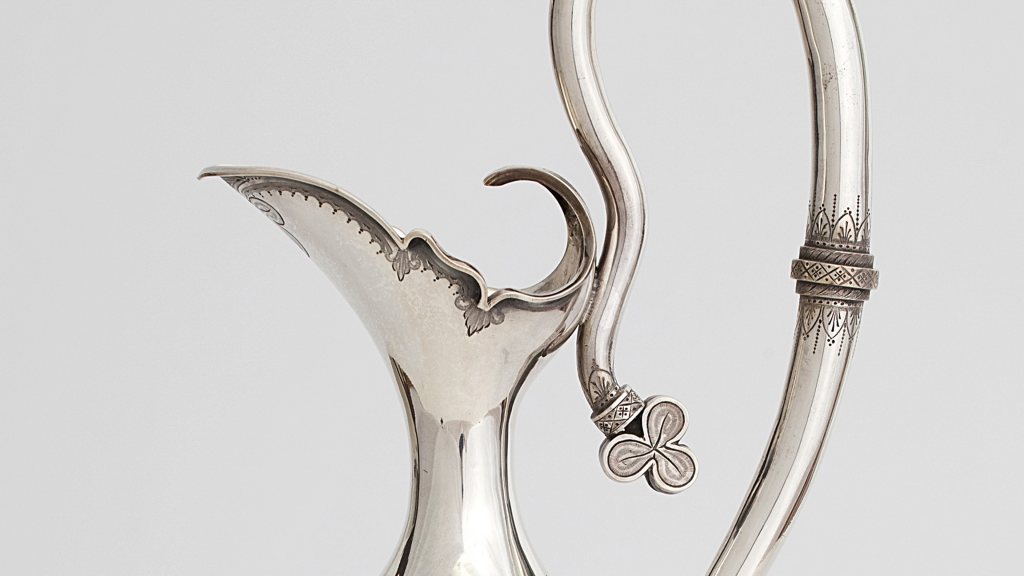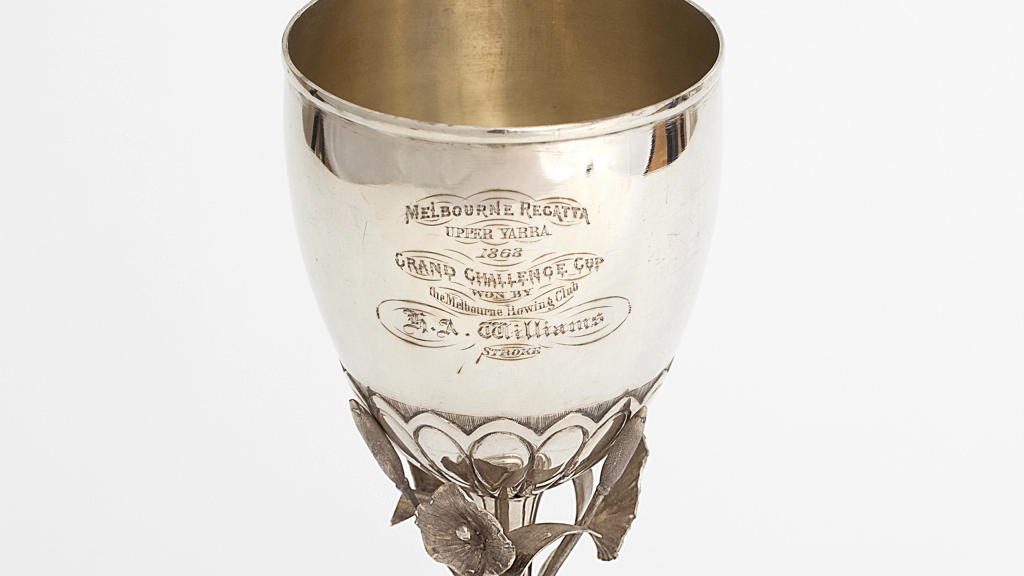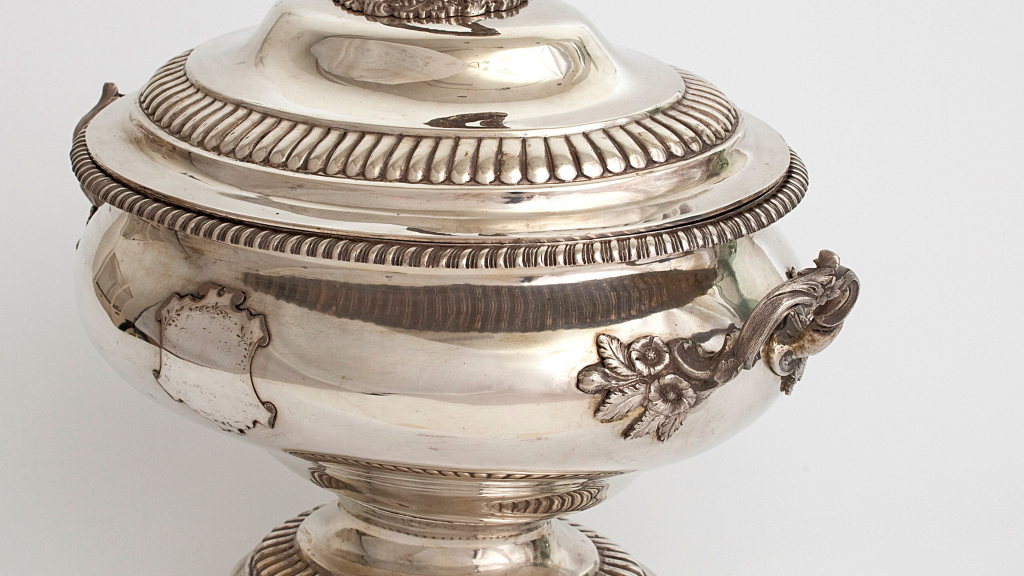
When it comes to design sensibilities today, I think many would describe this tureen as somewhat gaudy – particularly because any extravagant covered dish for serving soup would be a strange addition to modern dinner tables. However, this style of decorative art was once considered the height of refinement. Emerging from the salons of early […]
Read More…
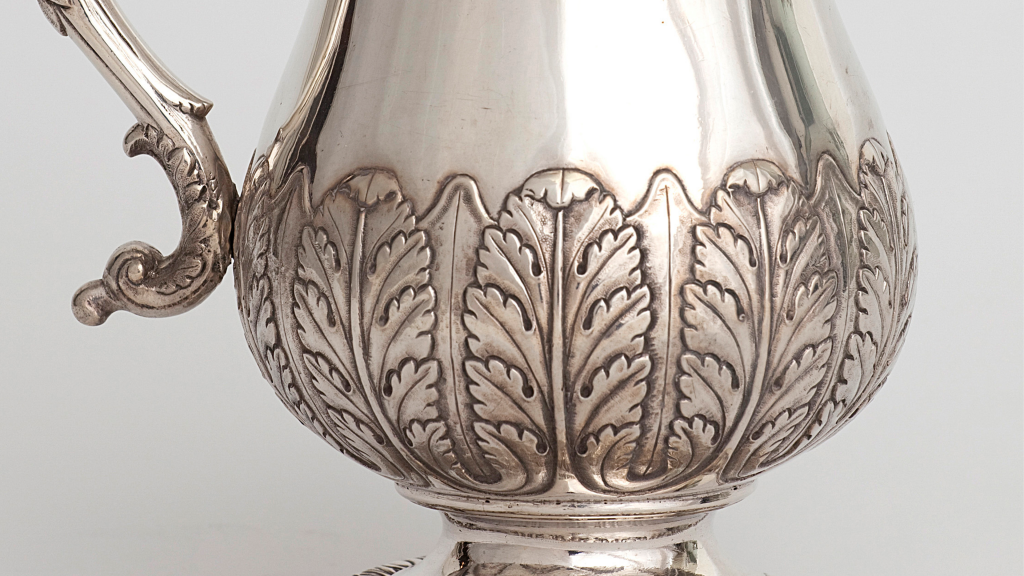
It is hard to know exactly how William Edwards (1819-1899) must have felt arriving to Melbourne in 1857. At the very least, he must have been slightly more comfortable than the average English traveller at the time. In an arrangement reserved only for noteworthy passengers, he had travelled in the chief cabin of the Blanche […]
Read More…
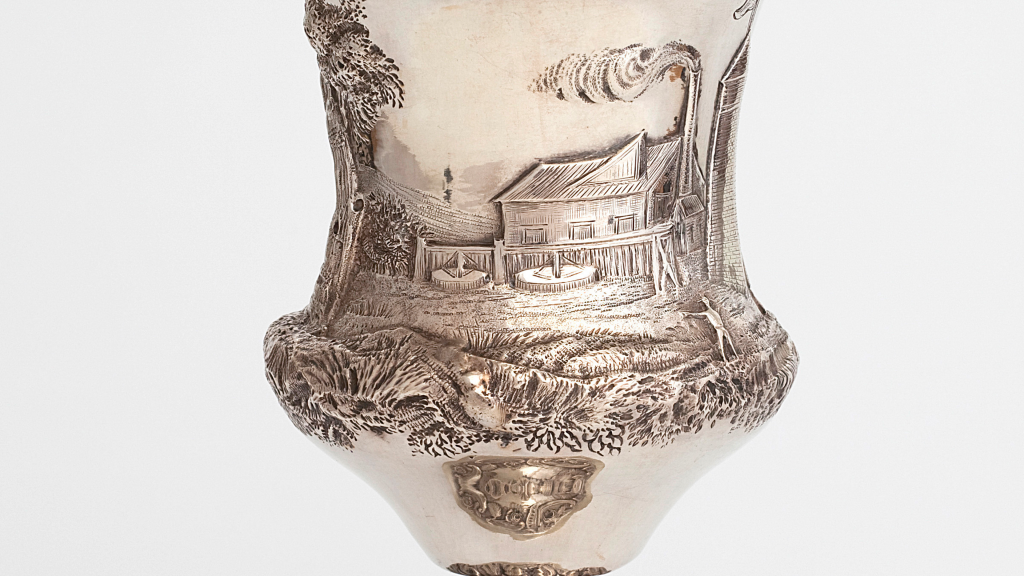
One step removed from the sweltering heat of the forge, smoke billows from a chimney between towering trees. Small figures are at work around the refinery – surveying, shoving, and squatting. Steep slopes of earth disappear into the distance of a spotless sky. This sterling silver goblet was made by William Edwards (1819-1899) and retailed […]
Read More…

Before the 1850s, Australian silverware was incredibly scarce. The nature of settlement, including a low population and lack of materials, meant silversmithing was an extravagance. That is, until the discovery of silver, especially in Broken Hill, made it possible for a few talented craftsmen to become prolific manufacturers. Joachim Wendt (1830-1917) was one of the […]
Read More…
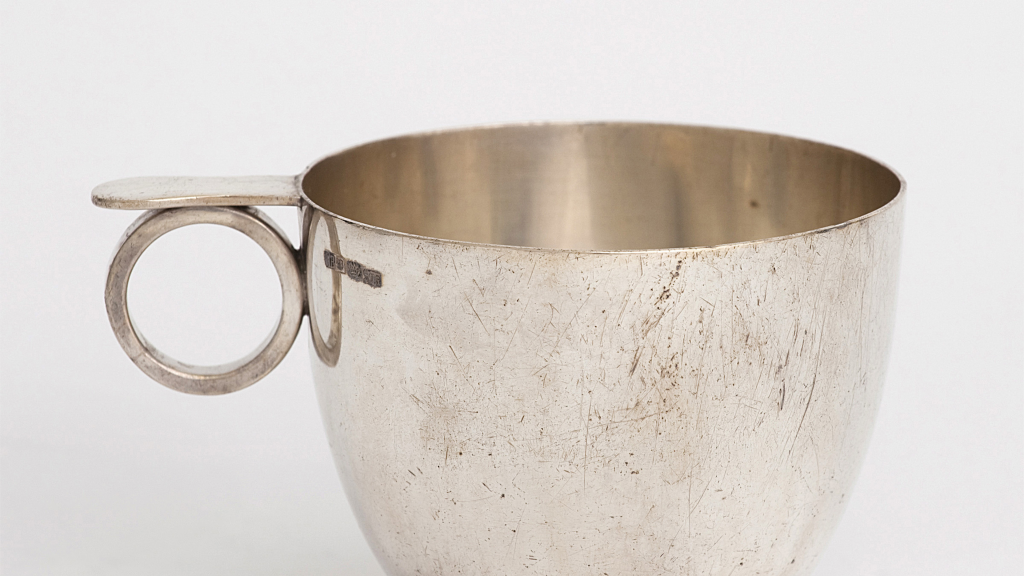
This little silver mug, with its matching porringer bowl, might have been presented to the parents of a fortunate baby in the early 1900s. Baby-sized sets of silver tableware have been popular christening gifts since they were first introduced in Stuart England. Given by godparents, they were a kind of good-luck charm, invoking prosperity and […]
Read More…
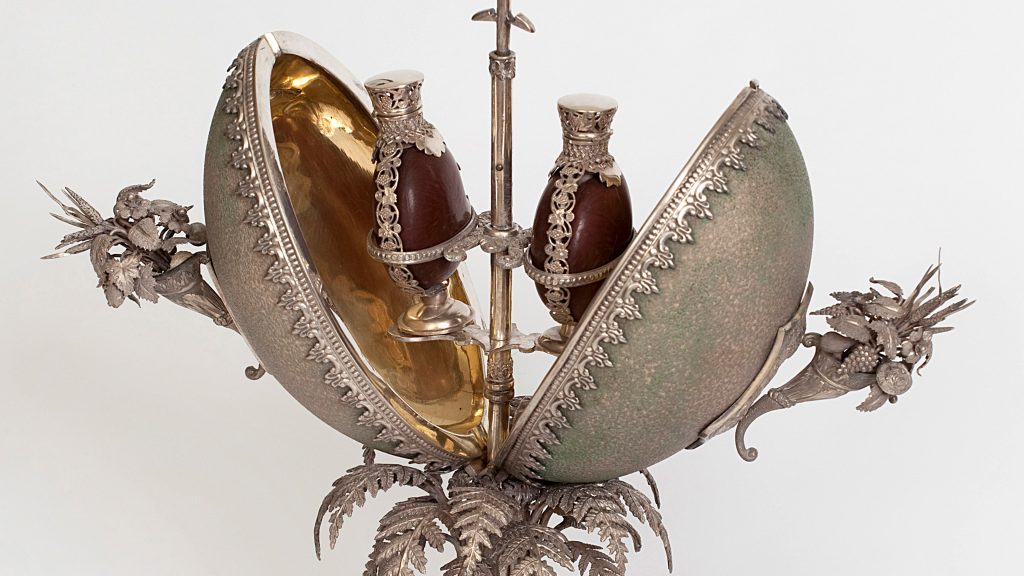
The mid-nineteenth century gold rush brought smiths and jewellers to Australia intent on reaping the benefits of a newly prosperous Australia. In 1858, Henry Steiner (1834-1914), a German silversmith, immigrated to Adelaide, South Australia, for that very reason. Now known as one of Australia’s most prolific silversmiths, much of his success was made possible by […]
Read More…
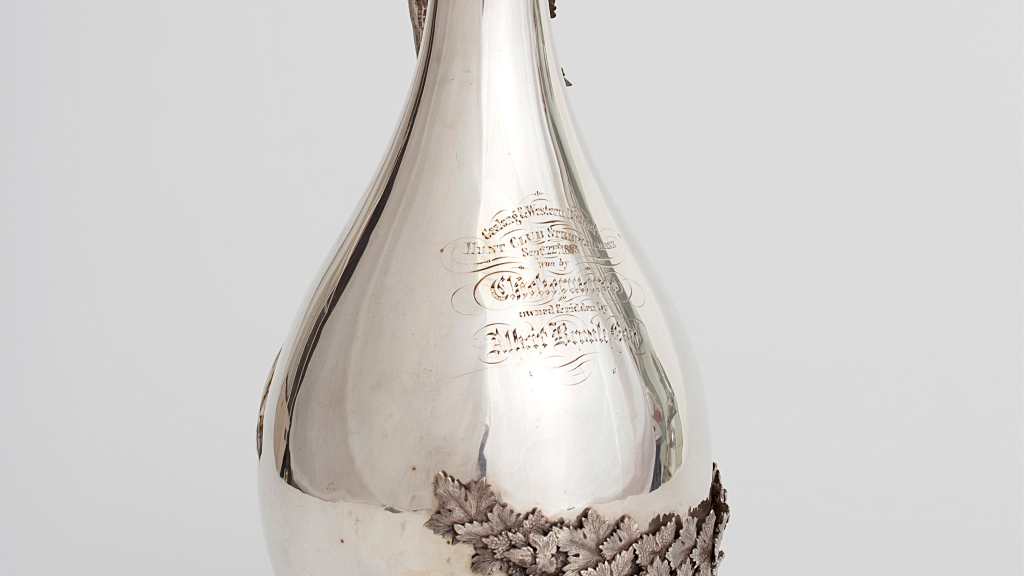
Much can be learned about the 1863 ‘Geelong and Western Districts Hunt Club Cup’ through the punters alone: ‘The gentleman about the Bay View Hotel had either no opinions to back, no money to back them with, or no pluck to invest in it.’ Made by William Edwards, this silver claret jug would be the […]
Read More…
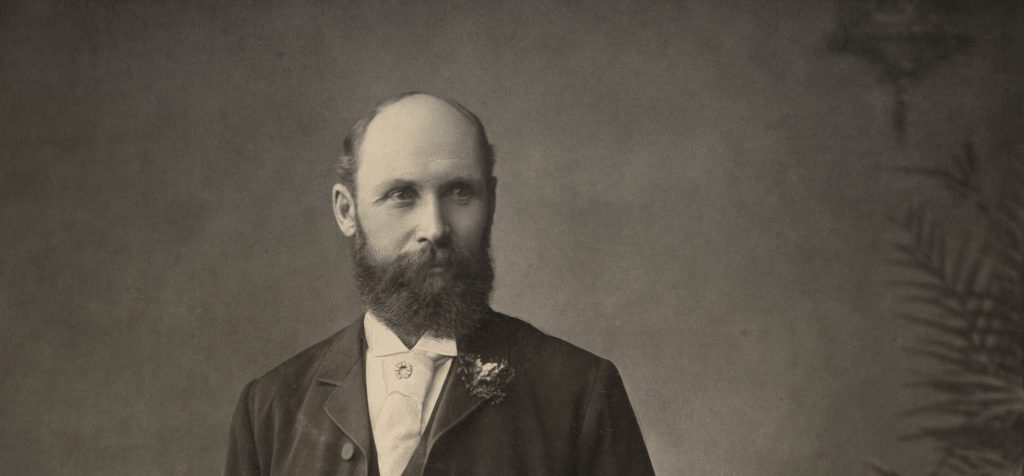
Measuring a little over one metre tall this photographic portrait is of Charles Rasp (1846-1907), the man credited with finding silver at Broken Hill and establishing the now British-owned mining company BHP (Broken Hill Proprietary Company) in 1885. For decades the settler population at Broken Hill has celebrated Rasp as the city’s ‘founding father’, including […]
Read More…








